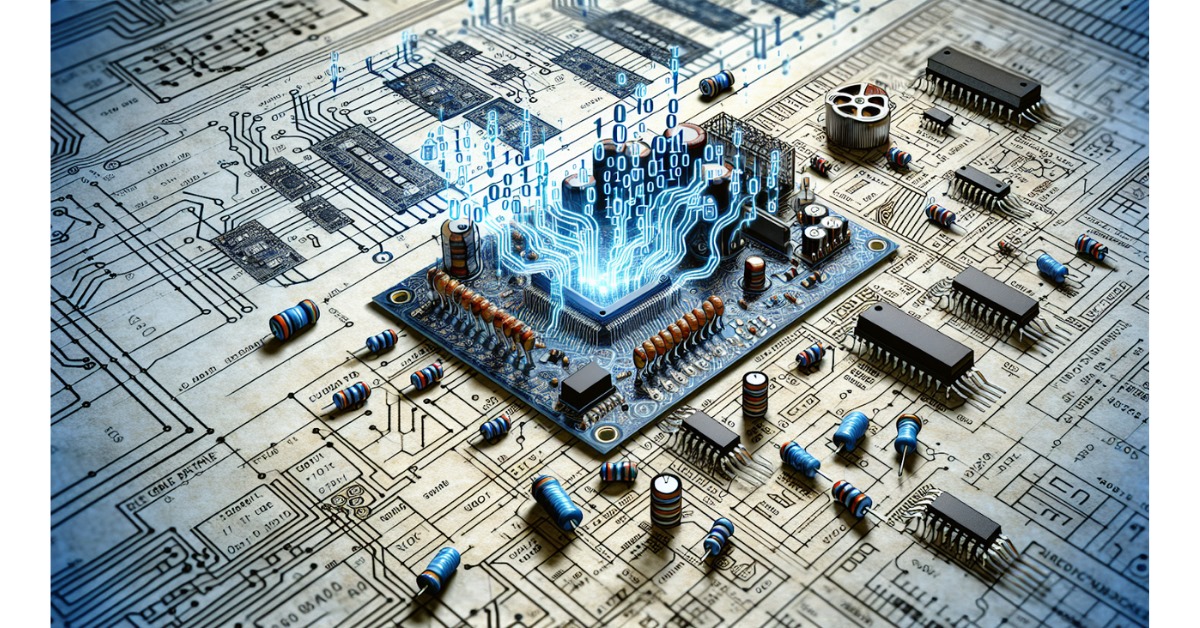Introduction
In the era of renewable energy, designing power-efficient analog circuits is crucial for maximising the performance and longevity of renewable energy systems. Custom circuit board design and electronics design play a vital role in ensuring that these systems operate at optimal efficiency while minimising power consumption. This comprehensive guide will delve into the intricacies of designing analog circuits for renewable energy applications, focusing on key aspects such as component selection, circuit topology, and power management techniques.
The Importance of Power Efficiency in Renewable Energy Systems
Renewable energy systems, such as solar panels and wind turbines, rely on natural resources to generate electricity. However, these resources are often intermittent and variable, making it essential to design circuits that can efficiently harness and store the generated energy. Power-efficient analog circuits help to minimise power losses, increase system reliability, and extend the lifespan of renewable energy systems.
Benefits of Power-Efficient Analog Circuits
- Reduced power consumption
- Increased system efficiency
- Prolonged battery life
- Enhanced system reliability
- Lower operating costs
Custom Circuit Board Design for Renewable Energy Applications
Custom circuit board design is an essential aspect of developing power-efficient analog circuits for renewable energy systems. By tailoring the circuit board layout to the specific requirements of the application, designers can optimise signal integrity, minimise power losses, and improve overall system performance.
Key Considerations in Custom Circuit Board Design
- Component placement and routing
- Signal integrity and noise reduction
- Thermal management
- Manufacturability and cost-effectiveness
- Compliance with industry standards and regulations
Best Practices for Custom Circuit Board Design
- Use high-quality, low-loss PCB materials
- Minimise trace lengths and widths to reduce resistive losses
- Implement proper grounding and shielding techniques
- Optimise component placement for improved thermal dissipation
- Conduct thorough testing and validation to ensure reliability and performance
Electronics Design for Power-Efficient Analog Circuits
Electronics design is another critical aspect of creating power-efficient analog circuits for renewable energy systems. By carefully selecting components and designing circuit topologies that prioritise power efficiency, designers can significantly reduce power consumption and improve system performance.
Component Selection for Power Efficiency
- Low-power microcontrollers and digital signal processors (DSPs)
- High-efficiency power converters and regulators
- Low-dropout (LDO) voltage regulators
- Low-leakage capacitors and inductors
- Energy-efficient sensors and transducers
Circuit Topologies for Power Efficiency
- Switch-mode power supplies (SMPS)
- Synchronous rectification
- Pulse-width modulation (PWM) control
- Resonant converter topologies
- Zero-voltage switching (ZVS) and zero-current switching (ZCS) techniques
Power Management Techniques for Analog Circuits
Implementing effective power management techniques is crucial for maximising the power efficiency of analog circuits in renewable energy systems. These techniques help to optimise power consumption, reduce energy waste, and extend the lifespan of the system components.
Dynamic Power Management
- Adaptive voltage and frequency scaling (DVFS)
- Power gating and clock gating
- Standby and sleep modes
- Dynamic power-down of unused circuit blocks
- Intelligent power scheduling and task allocation
Energy Harvesting and Storage
- Maximum power point tracking (MPPT) algorithms
- Efficient energy storage using supercapacitors and lithium-ion batteries
- Energy-aware battery charging and discharging protocols
- Wireless power transfer and energy harvesting from ambient sources
- Hybrid energy storage systems for improved efficiency and reliability
Case Studies: Power-Efficient Analog Circuits in Renewable Energy Systems
To illustrate the practical application of power-efficient analog circuits in renewable energy systems, let’s explore some real-world case studies.
Case Study 1: Solar-Powered Wireless Sensor Network
In this case study, a solar-powered wireless sensor network was designed using custom circuit board design and electronics design principles. The analog circuits were optimised for power efficiency, incorporating low-power components, energy harvesting techniques, and dynamic power management. The result was a self-sustaining sensor network capable of operating for extended periods without battery replacements.
Case Study 2: Wind Turbine Control System
This case study focuses on the development of a power-efficient analog control system for a wind turbine. The custom circuit board design prioritised signal integrity and noise reduction, while the electronics design utilised high-efficiency power converters and low-power microcontrollers. The implementation of advanced power management techniques, such as adaptive voltage scaling and intelligent power scheduling, further enhanced the system’s power efficiency.
Challenges and Future Directions
Designing power-efficient analog circuits for renewable energy systems comes with its own set of challenges and opportunities for future development.
Challenges in Power-Efficient Analog Circuit Design
- Balancing power efficiency with performance and cost
- Ensuring reliability and robustness in harsh environmental conditions
- Adapting to rapidly evolving renewable energy technologies
- Complying with stringent industry standards and regulations
- Addressing the increasing demand for miniaturisation and integration
Future Directions and Opportunities
- Advances in wide-bandgap semiconductor materials (e.g., GaN, SiC)
- Integration of artificial intelligence and machine learning techniques
- Development of novel circuit topologies and power management algorithms
- Exploration of new energy harvesting and storage technologies
- Collaboration between academia and industry for accelerated innovation
Conclusion
Designing power-efficient analog circuits is a critical aspect of developing high-performance and sustainable renewable energy systems. By leveraging custom circuit board design, electronics design, and advanced power management techniques, designers can create analog circuits that optimise power consumption, improve system efficiency, and extend the lifespan of renewable energy systems. As the demand for clean energy continues to grow, the development of power-efficient analog circuits will play a vital role in shaping the future of renewable energy technology.







